Abstract
The uncooperative behavior of grade-school children during dental treatment was examined. Forty children enrolled in a government dental program were observed during treatment conditions involving instructions concerning the appropriate behavior required by the dental practitioner, description of the objective procedures and subjective experience the child could expect, praise for appropriate behavior, and a colorful stamp for coming to the clinic. Eight of these children whose behavior was still too disruptive for effective dentistry were formally introduced to additional intervention procedures of tangible consequences for cooperative behavior, and observation of peers and by peers during actual dental treatment. Within a multiple baseline design, the intervention conditions were effective in decreasing the children's uncooperative behavior to acceptable levels.
Full text
PDF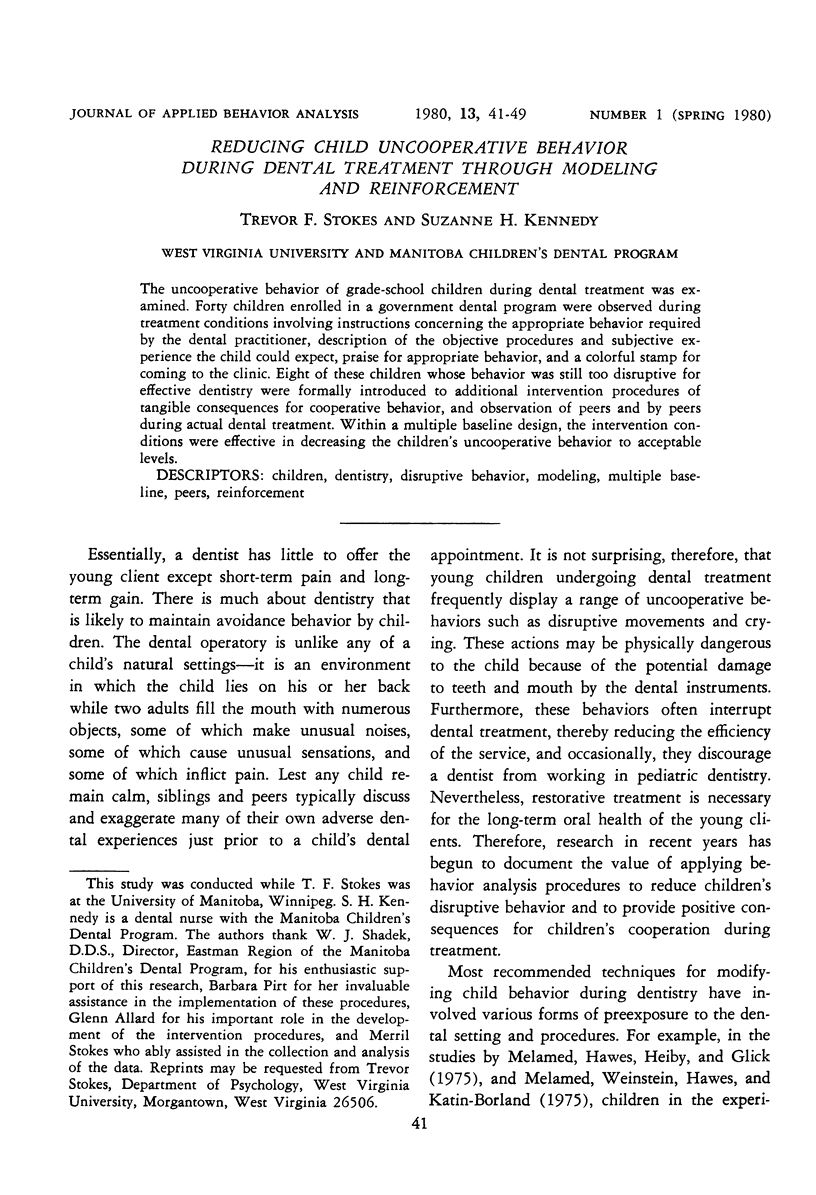
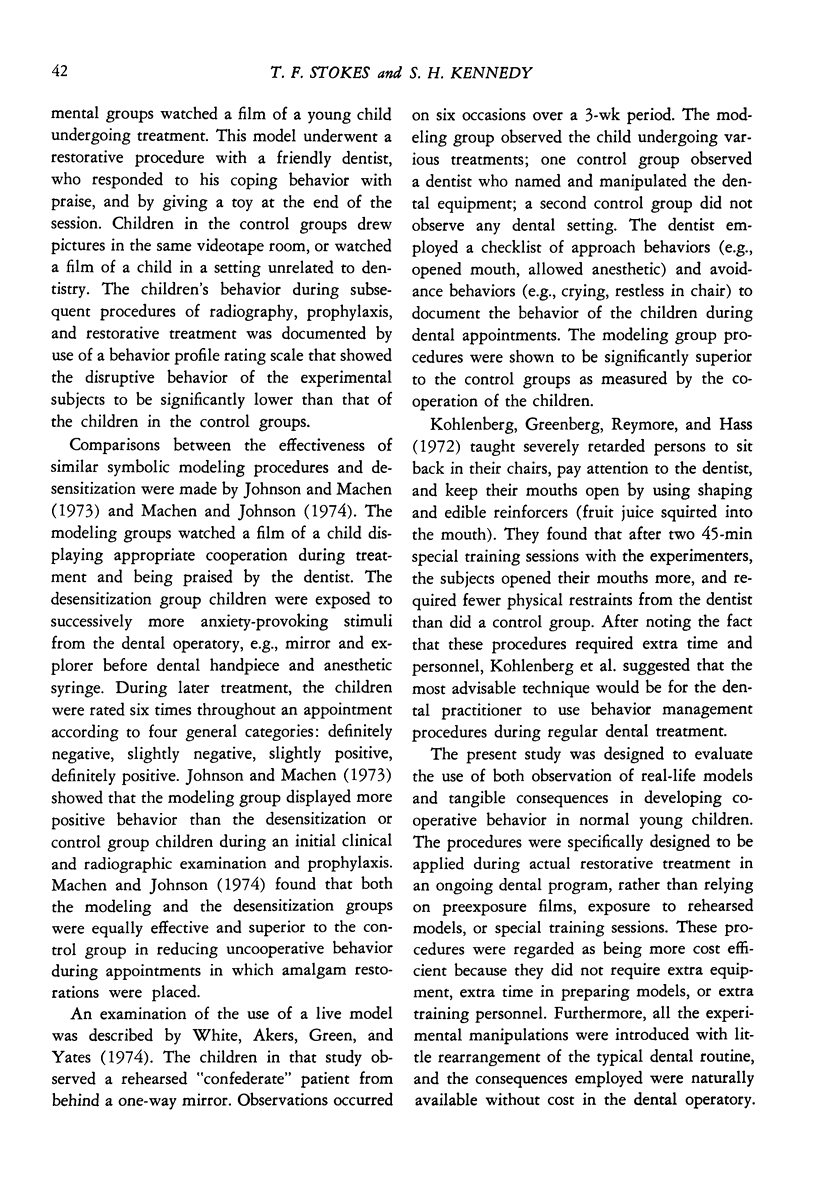
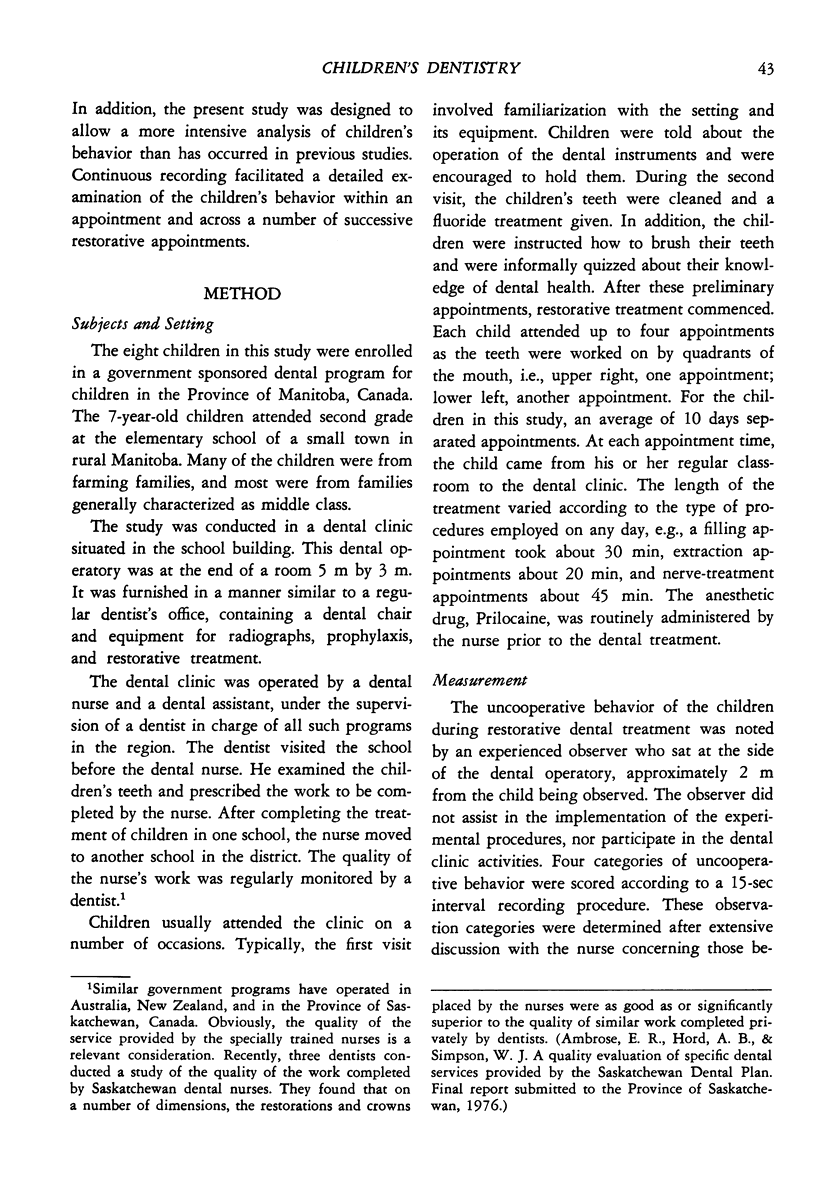



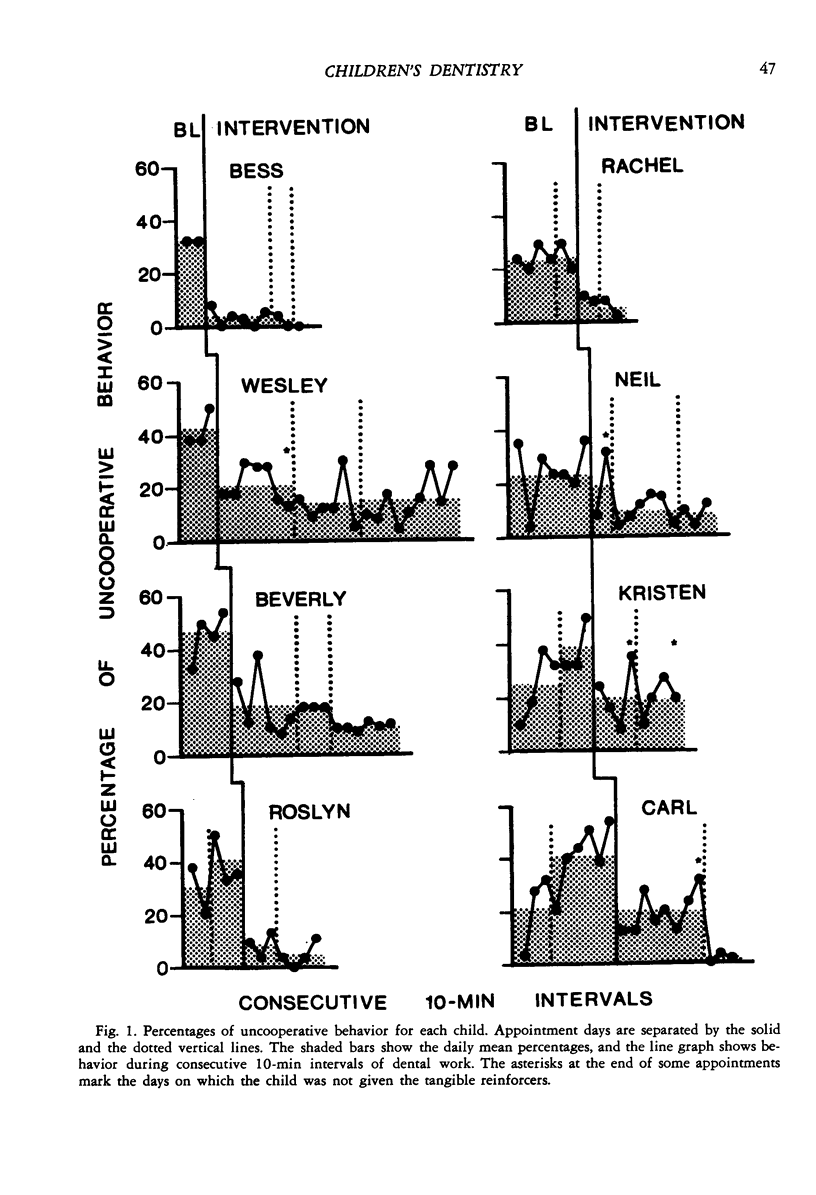
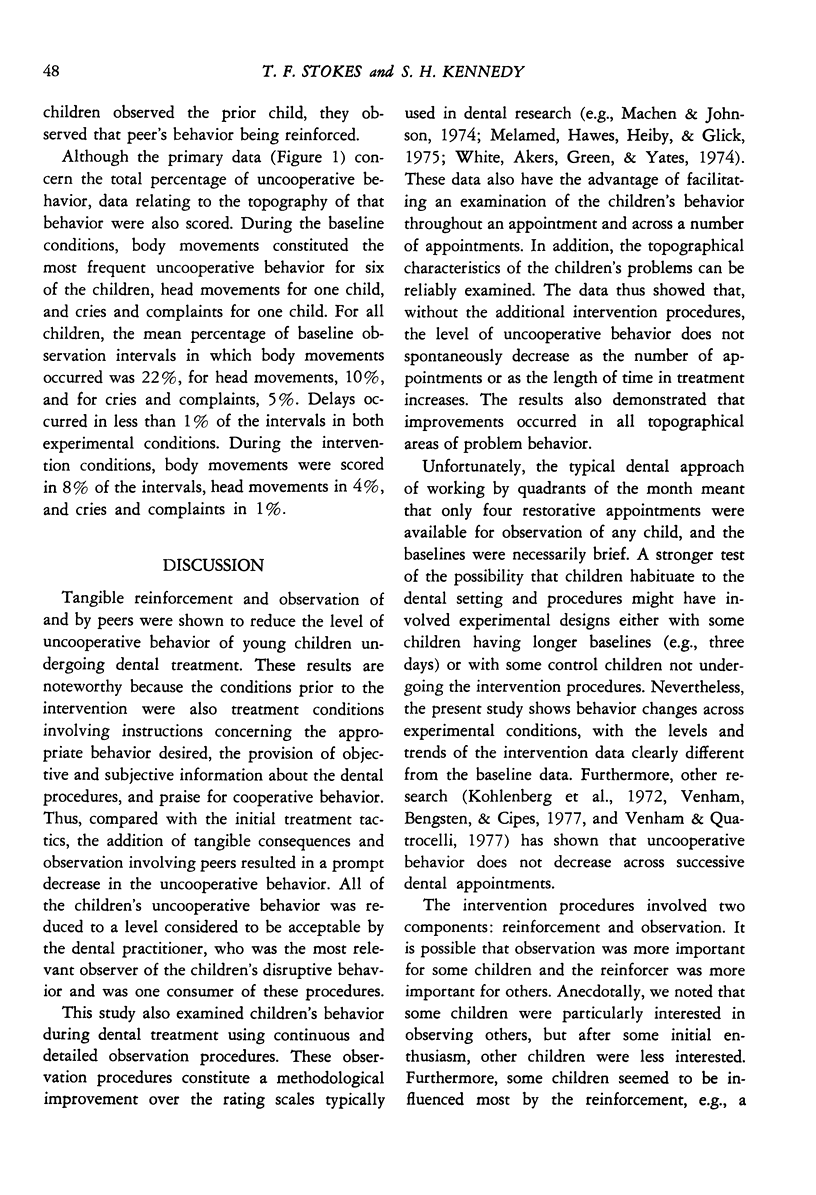
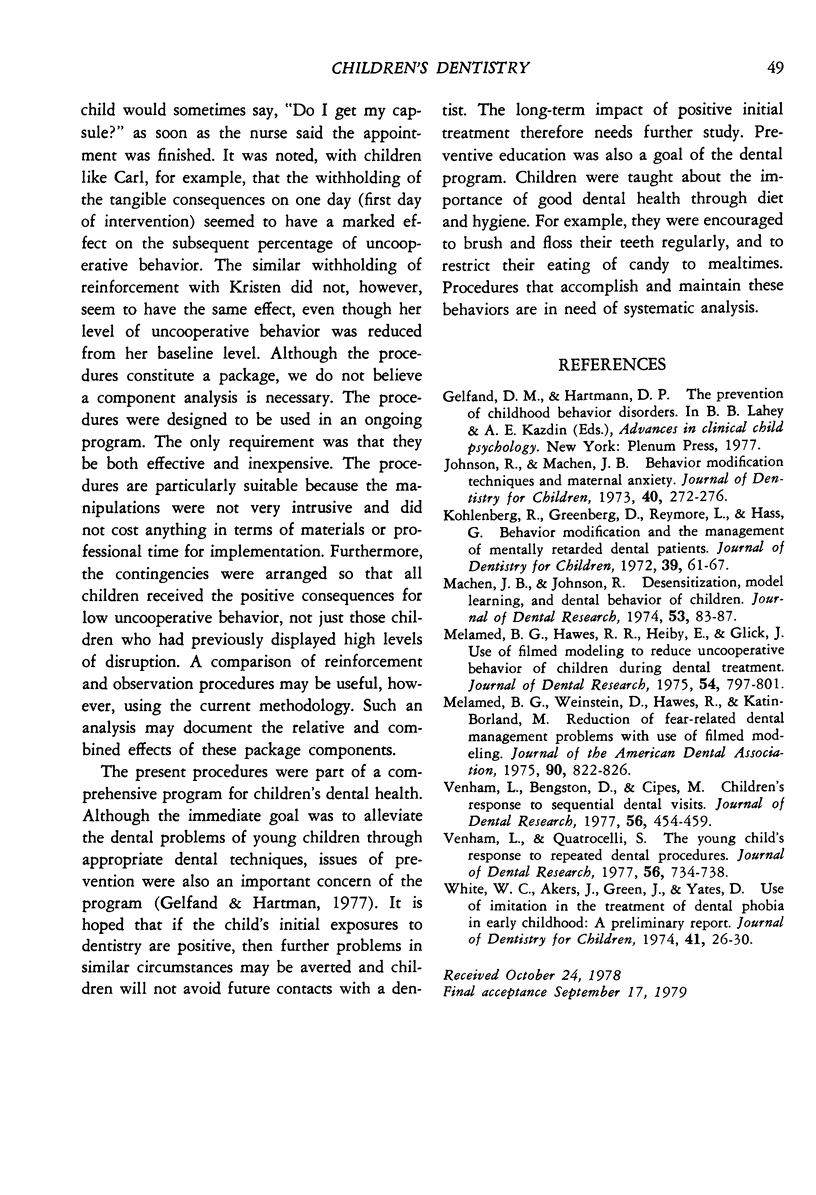
Selected References
These references are in PubMed. This may not be the complete list of references from this article.
- Johnson R., Machen J. B. Behavior modification techniques and maternal anxiety. ASDC J Dent Child. 1973 Jul-Aug;40(4):272–276. [PubMed] [Google Scholar]
- Kohlenberg R., Greenberg D., Reymore L., Hass G. Behavior modification and the management of mentally retarded dental patients. ASDC J Dent Child. 1972 Jan-Feb;39(1):61–67. [PubMed] [Google Scholar]
- Machen J. B., Johnson R. Desensitization, model learning, and the dental behavior of children. J Dent Res. 1974 Jan-Feb;53(1):83–87. doi: 10.1177/00220345740530013701. [DOI] [PubMed] [Google Scholar]
- Melamed B. G., Hawes R. R., Heiby E., Glick J. Use of filmed modeling to reduce uncooperative behavior of children during dental treatment. J Dent Res. 1975 Jul-Aug;54(4):797–801. doi: 10.1177/00220345750540041701. [DOI] [PubMed] [Google Scholar]
- Melamed B. G., Weinstein D., Katin-Borland M., Hawes R. Reduction of fear-related dental management problems with use of filmed modeling. J Am Dent Assoc. 1975 Apr;90(4):822–826. doi: 10.14219/jada.archive.1975.0151. [DOI] [PubMed] [Google Scholar]
- Venham L., Bengston D., Cipes M. Children's response to sequential dental visits. J Dent Res. 1977 May;56(5):454–459. doi: 10.1177/00220345770560050101. [DOI] [PubMed] [Google Scholar]
- Venham L., Quatrocelli S. The young child's response to repeated dental procedures. J Dent Res. 1977 Jul;56(7):734–738. doi: 10.1177/00220345770560070501. [DOI] [PubMed] [Google Scholar]


